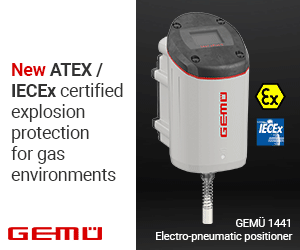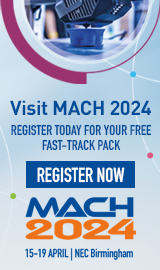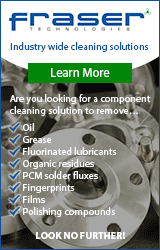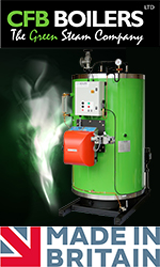The Challenges of Accurate Interface Measurement
Interface or multiphase level measurements exist throughout the oil & gas streams as well as petrochemical. While level measurement technologies have come a long way in effectively measuring liquids and solids, multiphase level measurement continues to be the biggest challenge and opportunity that exists today to which there is no perfect technology. However, experience has shown that process optimization and increased uptime can still be achieved in many separator applications through reliable, best-in-class, level technology.
Magnetrol® recognizes that interface measurement is a key concern for these industries, as well as many others. With that in mind, MAGNETROL has developed a white paper addressing the challenges and considerations around interface measurement and currently available technologies for process optimization.
The Basics of Interface
In the oil & gas and petrochemical industries, the need for reliable interface measurement arises whenever immiscible liquids, those incapable of mixing, reside within the same vessel. The lighter medium rises to the top and the heavier settles at the bottom. In oil production, for example, water or steam is used to extract oil from a well. Well fluids then route to production separators where they settle into their primary constituents as a hydrocarbon over water interface.

Figure 1: Multiphase level often includes
hydrocarbon top, emulsion (rag layer) middle
and water bottom
Interfaces can form between liquids and solids, liquid and foam, and liquid and gas; but the emphasis here will be concentrated on liquid/liquid interface (often with a vapor space above the top/lighter liquid). Immiscible liquids meet along an interface layer where they undergo some amount of emulsification. This emulsion layer (also referred to as a “rag” layer) may form a narrow, distinct boundary, but more frequently it is a broader gradient of the mixed liquids. Generally, the thicker the emulsion layer, the greater the measurement challenge.
While monitoring the top, or total level, is critical for safety and overfill prevention, knowing the level of an interface is necessary for maintaining product quality and operations efficiency. If there is water in oil that is not separated effectively (water carryover), then this can induce processing problems, equipment failures and unplanned shutdowns. If there is oil in water (oil extraction), then there can be production loss, environmental fines, penalties and forced shutdowns.
Of all the level switches and transmitters available, only a handful are suitable for reliable interface measurement. The leading interface measurement technologies include guided wave radar (GWR), buoyancy-based displacers and magnetostrictive, RF capacitance, nuclear/ gamma radiation and thermal dispersion. Ideally, the technology utilized for interface applications does not have to differ from other level instruments installed at the facility in order to maintain familiarity with users. Standardizing on a technology helps reduce training, installation & commissioning, maintenance and downtime. Of course all of these have an associated cost.
Current Level Technologies Utilized for Interface Measurement
There is no perfect, one-size-fits-all technology for interface applications. Outside of considering reliability and price points, familiarity often plays a pivotal role in determining the level measurement solution. This is particularly true for established technologies such as differential pressure (DP) and displacer-based products.
DP is still the most widely used level measurement technology, as seen in the Control Market Intelligence Report in March 2017,1 where over 40% of instrumentation users / respondents advised that they prefer and use DP in approximately one-third or more of their applications as a percent of all instruments. However, DP is not a preferred technology for interface measurement. Extensive calibration is required along with assumptions that density and total level are constant.
Utilizing this technology typically results in one inferred interface measurement near the middle of the emulsion layer as opposed to both total level and interface measurement. Variation in the thickness of the emulsion layer affects density, and can therefore induce significant inaccuracy.

Figure 2: GWR with signal
reflections down probe
Referencing that same Control report, the second most preferred technology as a percent of all instruments and applications is GWR. Over 25% of respondents preferred GWR in approximately one-third of their applications. The ability to use GWR for total level (potential overfill prevention) and interface applications greatly increases user familiarity, allowing the technology to be applied correctly while decreasing training and commissioning time. GWR may also have limitations for interface but these are often mitigated with demulsifiers or increasing process temperature to assist the separation of heavier oils.

Figure 3: Direct-insertion magnetostrictive
transmitter measuring emulsion layer
Other interface technologies, such as displacers (mechanical) and RF capacitance, are preferred by only 12.6% and 8.2% of respondents respectively in one-third of their applications. Heavy oils may present major inaccuracies when coating probes or building up on floats, which can also increase maintenance intervals. However, there is a comfort level with these technologies for Oil & Gas sectors in particular.
Download the Interface whitepaper on interface.magnetrol.com and check out the Interface Level Technology Comparison table. It displays a condensed look at the primary technologies used in interface, along with their strengths and limitations. A figure is also included to highlight the importance of addressing density, or API gravity, for technology consideration. High specific gravity (low API) heavy crude oils impact the emulsion layer and can potentially add to the maintenance requirements.
Field Experience for Process Optimization and Increased Uptime
In the Oil & Gas and Petrochemical industries, there are numerous interface applications that potentially produce an emulsion layer. Having a reliable level measurement will help optimize processes while increasing uptime. The following are applications and case studies highlighting the challenges faced for level technologies and the importance of this measurement.
It should be noted that no matter the technology, optimal installation conditions will assist in maximizing device performance. For instance, when inlet crude oil from a well enters a separator, retention time may be the most important factor to allow for the desired instrumentation performance, and therefore, process optimization. In other words, if the feed comes into a horizontal separator, the optimal installation location of the level measurement device is further away from the inlet (closer to the weir) where separation of the crude and water becomes more uniform. Demulsifiers assist with emulsion breakdown but can be reduced (estimated $1.5-2K USD per ton) when working in concert with reliable interface level measurement.
When device performance is maximized, a tighter control of the top of the emulsion layer is possible. The top of the emulsion is an indicator of water present in oil. With the primary goal of the separator to remove water from the oil, the level measurement can now allow operation closer or further away from the weir to optimize separator efficiency and retention time. If the separator-type is primarily for water storage, with a thin layer of oil on top, then tighter interface control will also provide a more accurate representation of how much water (only) is present in the vessel. This allows improved truck utilization, ensuring full truckloads during water extraction from storage vessels.
This ideal installation may not always be possible on a retrofit, but ideally instrumentation location is taken into account during separator design.
What is important to consider in any application, regardless of whether it is interface or total level, is what can occur during upset conditions or startup and shutdown.
Most devices may work fine in normal interface operation; however, reliable measurement is required in those upset cases as well:
- When only one liquid exists (only water or only oil)
- When chamber is flooded only oil and water – no gas phase exists)
- Multiphase oil, water and gas including overfill prevention
The first industry that comes to mind when discussing interface is upstream Oil & Gas or exploration and production (E&P). The initial challenges begin at the wellhead separators and resonate through the remaining hydrocarbon streams. Aside from this initial separation, an increasingly influential interface measurement for unconventional plays utilizing hydraulic fracturing is at saltwater disposal (SWD) facilities.
These types of interface challenges exist through midstream tank farms and storage terminals, into downstream boots and desalters at refineries, and even petrochemical quench towers in the quench settlers/quench water separation drums.
More Information
Read the new white paper and learn how to achieve reliable interface measurement to optimize process and increase uptime.
Download the Interface whitepaper at interface.magnetrol.com
Contact info: Magnetrol NV, Heikensstraat 6, 9240 Zele Belgium, info@magnetrol.be, tel. +32 (0) 52 45 11 11




























































































































